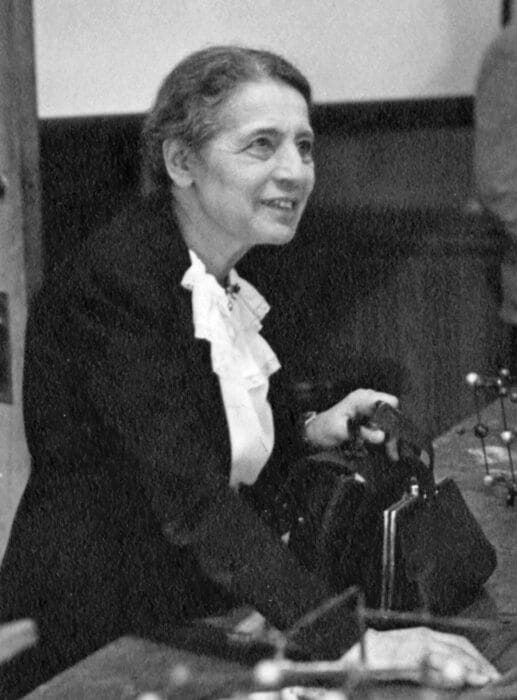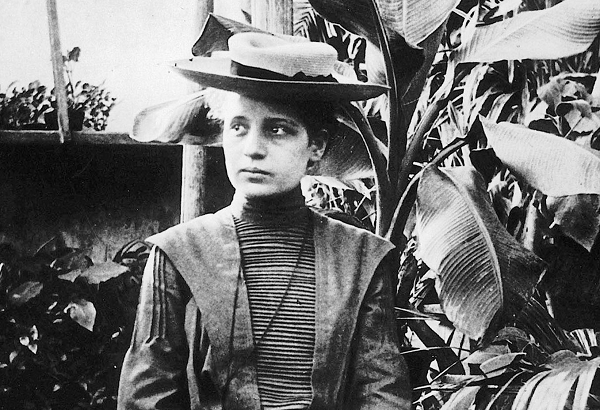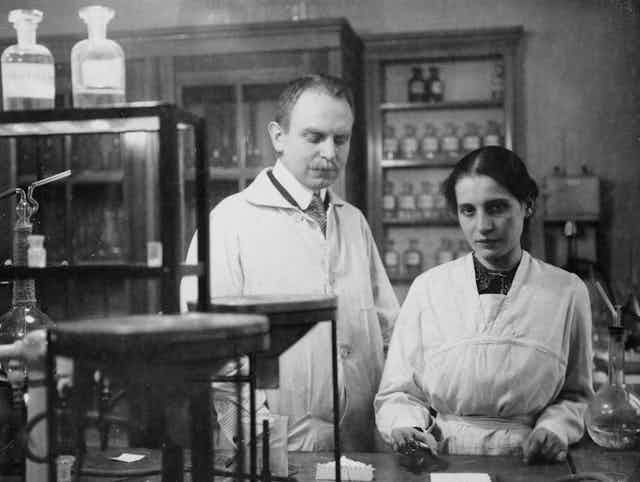Science Essay Competition: Nana W’s Profile of Lise Meitner Wins First Prize
Thursday 7 November 2024
Miss Coral Smith, Head of Science, writes:
We had some fantastic essays about lesser known female scientists across the three science disciplines. It was incredibly difficult to choose a winner as they were so well researched and written. They will be displayed on the notice boards in the Science Department.
A prize will be making its way to Nana shortly.
NANA W (YEAR 12)
Lise Meitner
 Meitnerium, a highly radioactive element with the atomic number 109, is named after Lise Meitner. The pioneering nuclear physicist was born in Vienna, Austria, in 1878 and co-developed the theory of nuclear fission. Her discoveries have laid the groundwork for nuclear science, as well as the creation of nuclear weapons. Despite her undeniably important contributions, Lise remains as one of the many under-appreciated figures in modern science.
Meitnerium, a highly radioactive element with the atomic number 109, is named after Lise Meitner. The pioneering nuclear physicist was born in Vienna, Austria, in 1878 and co-developed the theory of nuclear fission. Her discoveries have laid the groundwork for nuclear science, as well as the creation of nuclear weapons. Despite her undeniably important contributions, Lise remains as one of the many under-appreciated figures in modern science.
Lise Meitner was the third of eight children in her Jewish family. Excelling in mathematics and science from an early age, she became one of the first women to enrol at the University of Vienna in 1901. 4 years later, she earned her PhD in physics, being the second woman to do so. Her devotion to physics was unyielding, moving to Berlin to work with physicist Max Planck and chemist Otto Hahn. Meitner and Hahn would develop a partnership that lasted for decades; some of their notable works were the discovery of isotope protactinium-231, studies of nuclear isomerism and beta decay.

Despite how brilliant of a scientist Meitner was, her identity - Jewish and a woman - barred her from many higher education and professional opportunities, forcing her to face significant discrimination and prejudice throughout her career. Initially working with Hahn, she was banished to a basement laboratory with a separate entrance as the rest of the institute was out of bounds to women. This didn’t stop her pursuits though, continuing to research about radioactivity and the behaviour of atoms when bombarded with neutrons. Over the years, her hard work was reflected in her position as a highly respected professor, but her circumstances moulded her fate - Meitner fled to Sweden to escape Nazi persecution due to her Jewish heritage.
Even from afar, Meitner remained in close contact with Hahn, who informed her and Frisch of a baffling observation of uranium nuclei breaking up into smaller parts. This evidence supplied Meitner and Frisch to come up with a theory of nuclear fission. This discovery revolutionised physics, exploring the concept of nuclear energy and ultimately, the development of atomic bombs. Meitner was one of the first people to coin the term ‘nuclear fission’, and in 1939, released a paper on this process. However in 1944, Hahn, not Meitner, received the Nobel Prize for chemistry for nuclear fission. Meitner was overlooked and overshadowed by her male partners. This showed the ignorance and dismissal towards women scientists and added to the unfairness she had to face.
During this time, she was invited to work on the Manhattan Project in the United States. Meitner, however, adamantly refused to be involved, declaring ‘I will have nothing to do with the bomb!’ Her letters recorded the despair she felt, knowing her efforts for science had been used destructively. Because of this, Meitner became an advocate for the peaceful use of nuclear energy.
Although Meitner faced systemic sexism and antisemitism throughout her career, her accomplishments were eventually recognised. In 1949, she received the Max Planck medal and in 1966, the Enrico Fermi Award. Meitner also continued to teach and lecture, further contributing her knowledge to aspiring physicists.

Lise Meitner paved the way for the chemical identification of one of the first fission products of uranium, and her discoveries have had lasting impacts on science and medicine. Despite being denied many of the honours she deserved during her lifetime, her stories and achievements undoubtedly show her contributions to the modern world; her character remains an inspiration to women in science.
